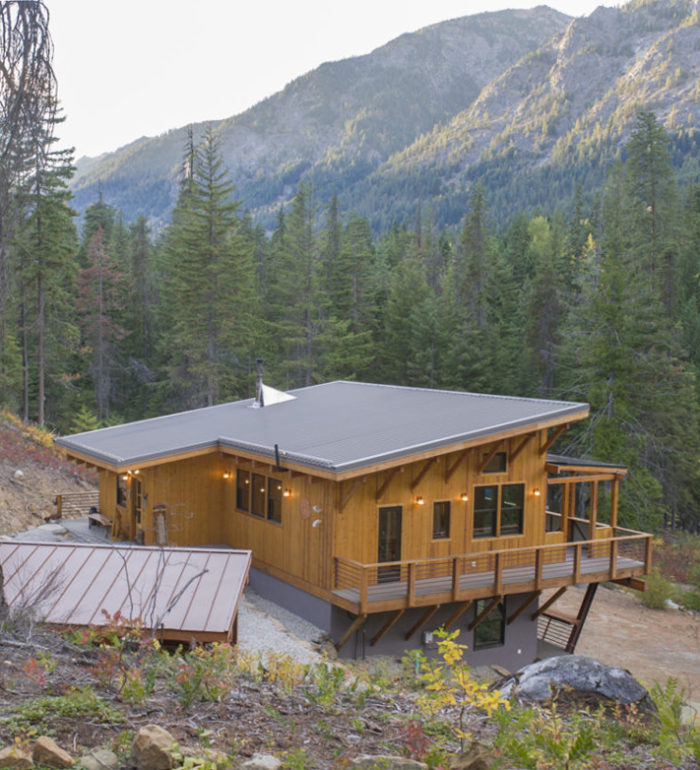
Image Credit: Image #1: Fine Homebuilding
A very small percentage of U.S. homes are off the electricity grid — far fewer, for example, than in Africa. That said, North American designers of off-grid homes often end up posting questions on GBA.
To help this subset of builders avoid common design errors, I’ll share what I’ve learned from living in an off-grid house for 42 years.
Off-grid homeowners use less electricity
Off-grid homeowners have a much stricter energy budget than owners of grid-connected homes. This is due to simple economics: off-grid electricity is expensive — on the order of $0.50 to $1.00 per kWh.
Sure, photovoltaic (PV) modules are relatively cheap. But batteries and gas-powered generators (or propane-fired generators) are expensive, and those of us who live off the grid need batteries and generators — because the sun doesn’t always shine.
During certain seasons, off-grid homeowners are likely to have an energy surplus. In Vermont, for example, a 1-kW PV system that produces 48 kWh of electricity in the month of December will produce three times as much electricity (145 kWh) in the month of May. If weather forecasters predict three days of sunny weather in May or June, you can plug in extra hairdryers, do several loads of laundry, and vacuum the house. But during a snowstorm in the middle of December, you’ve got to be careful about energy use. That’s when you will be using your broom instead of your vacuum cleaner.
House design issues
You can power your off-grid house with a micro-hydro system or a wind turbine if you want, but by far the most common way to generate off-grid electricity is with a PV system.
If you have a large lot, you probably want to install a ground-mounted PV array. If you live in a snowy region, ground-mounted arrays make snow removal easier than…
Weekly Newsletter
Get building science and energy efficiency advice, plus special offers, in your inbox.

This article is only available to GBA Prime Members
Sign up for a free trial and get instant access to this article as well as GBA’s complete library of premium articles and construction details.
Start Free TrialAlready a member? Log in





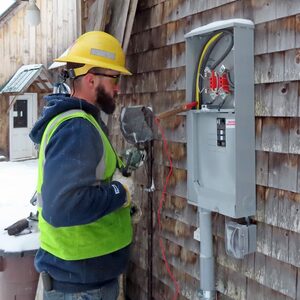
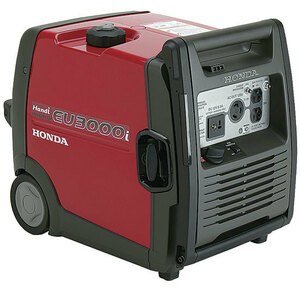
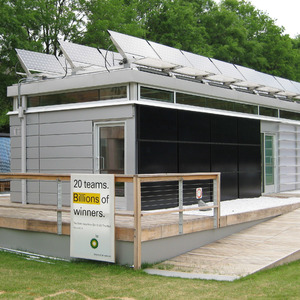
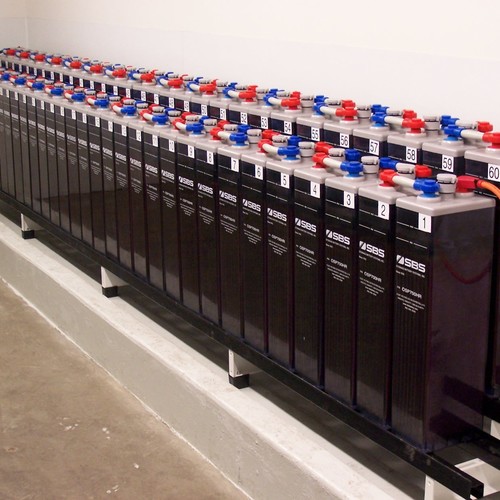






5 Comments
DHW
Martin,
Didn't you write recently that PV prices had come down so much that solar thermal DHW systems were obsolete?
John
Response to John Spier
John,
I think you are referring to my article titled Solar Thermal is Dead. In that article, I wrote, "Solar thermal systems still make sense for off-grid homes."
So I haven't contradicted myself.
As well, it's worth noting that I explained in the article on this page ("How to Design an Off-Grid House") that "off-grid homeowners are willing to pay a much higher premium for energy efficiency than grid-connected homeowners, because an expensive energy-efficient appliance is still cheaper than a less efficient appliance plus the PV equipment needed to keep the appliance functioning."
The bottom line: If you are paying between 8 cents and 24 cents per kWh for your electricity (as is the case for most grid-connected homeowners), a solar thermal system is a poor investment. But if you are paying between 50 cents and $1 per kWh for your electricity (as is the case for most off-grid homeowners), a solar thermal system makes sense.
An important topic for concerned ratepayers
Thanks for covering this, Martin.
The importance of this topic extends well beyond the Northeast Kingdom and remote home sites. For those of us in states where governments and/or utilities are fighting distributed renewable energy tooth and nail, some homeowners (well, at least one) consider "grid defection" a means of protest.
A relatively small number of grid-connected homeowners choosing to forego electrical grid services will certainly send chills down the spines of utility company execs, whose business models depend on full ratepayer participation. To borrow a term from some other (baser) political discourse in recent memory, grid defection on a significant scale could cause a "death spiral" of higher costs to remaining ratepayers, which increases grid defection, rinse/repeat. Utility companies are acutely aware of this possibility.
While grid defection may not make financial sense (yet) for those with access to cheap fossil-fueled electricity, a grassroots movement in that direction would be a very powerful incentive for power companies to take a more cooperative approach to distributed generation. For some ratepayers, the potential to play a role in bringing electric utilities kicking and screaming into the 21st century may be well worth a relatively modest energy premium.
Response to Brian Bailey
Brian,
I've written several blogs that touch on the topic of grid defection, which in my view is a long way off for most Americans. For example, see these two articles:
Batteries for Off-Grid Homes
Green Building in the Cheap Energy Era
While grid defection is both more expensive and much more of a hassle than the average dreamy-eyed green builder realizes, we can state with certainty that any utility that thinks it can avoid the "death spiral" problem by raising rates will eventually face the fact that two lines will cross: the increasing cost of grid electricity and the decreasing cost of off-grid electricity.
When those lines cross -- the exact time will depend on local conditions -- the death spiral will be in its final stage.
Nimbler utilities (like Green Mountain Power in Vermont) will enthusiastically jump on the photovoltaic bandwagon, and will develop a variety of services for PV-equipped homes. Utilities that embrace rather than reject the new "distributed generation" future are the ones that are most likely to survive.
One of the Geezers in my breakfast group has a large PV array with sufficient capacity to also charge his Chevy Bolt. Many hours of provocative discussion about NetZeroEnergy and electric cars have ensued.
With practical battery systems in sight, I have wondered about the practicality of manufacturing our major appliances to use Direct Current. In fact, some of our modulating heat pumps now employ "inverter technology." How great is the loss when converting ACDC? Would it be practical to feed those appliances on dedicated DC systems? In fact, in a truly off grid installation, why not use DC lighting via LEDs as well?
Mark Walter
Log in or become a member to post a comment.
Sign up Log in